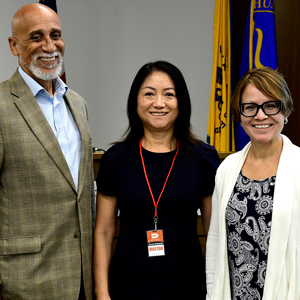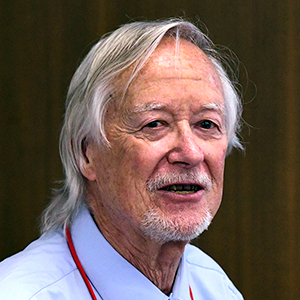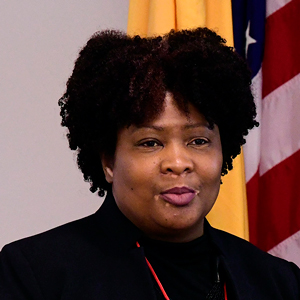For nearly three decades, Titia de Lange, Ph.D., has focused all of her research efforts on an enigmatic feature of chromosomes known as telomeres. These tiny structures act as protective caps that prevent cells from recognizing chromosome ends as DNA damage.
de Lange, director of the Anderson Center for Cancer Research at Rockefeller University, shared her insights into telomere biology Nov. 12 for the NIEHS Distinguished Lecture Series.
 de Lange has been recognized with many awards, including the 2013 Breakthrough Prize in Life Sciences, worth $3 million, for her research on telomeres. (Photo courtesy of Steve McCaw)
de Lange has been recognized with many awards, including the 2013 Breakthrough Prize in Life Sciences, worth $3 million, for her research on telomeres. (Photo courtesy of Steve McCaw)“Telomere biology is an important focus of NIEHS intramural and extramural communities,” said Dmitry Gordenin, Ph.D., head of the NIEHS Mechanism of Genome Dynamics Group and host of the seminar.
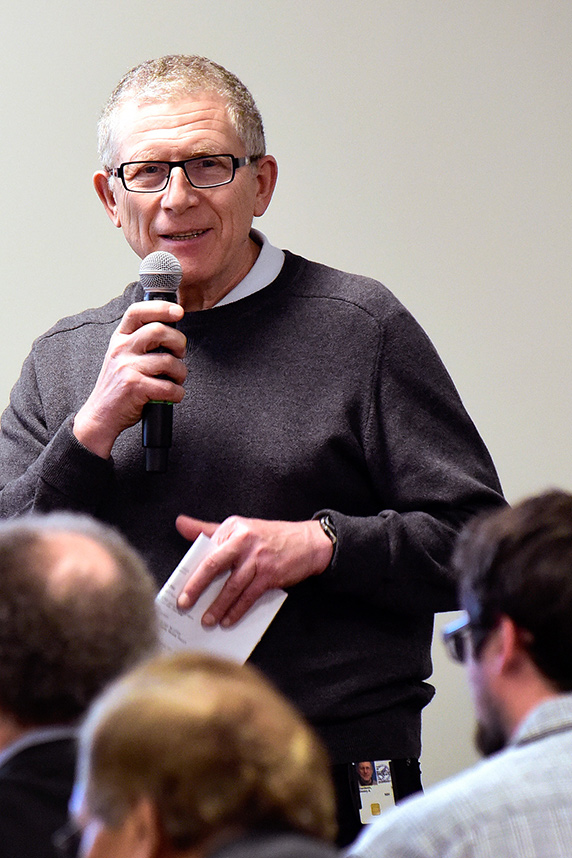 “I was struck by the extreme levels of instability in genomes of cells that go through crisis caused by loss of telomere protection,” said Gordenin, who has known de Lange for 20 years. (Photo courtesy of Steve McCaw)
“I was struck by the extreme levels of instability in genomes of cells that go through crisis caused by loss of telomere protection,” said Gordenin, who has known de Lange for 20 years. (Photo courtesy of Steve McCaw)“Importantly, Professor de Lange is the acknowledged leader in revealing telomere protection mechanisms,” he said. “This field is, to large extent, moved by her research findings.” de Lange made many of the seminal discoveries regarding telomeres.
- Telomeres form lasso-like structures called t-loops.
- A complex of proteins hides telomeres from the cell’s DNA repair machinery.
- Tumor cells have shorter telomeres than normal cells.
Dual roles
As de Lange explained it, the shortening of telomeres plays a dual role in cancer development and progression. Each time a cell divides, its telomeres shorten a little bit. After a while, the telomeres become too short to hold the group of proteins that shield it from the cellular machinery that recognizes breaks in DNA.
The DNA damage response then kicks in, causing cells to stop growing or perhaps even die. Based on these findings, scientists like de Lange believe telomere shortening functions as a biological pathway that suppresses tumor formation.
“However, this tumor suppressor pathway sometimes fails, particularly when p53 or RB [genes that induce cell cycle arrest in response to DNA damage] are lost,” said de Lange.
When that happens, the cells continue to divide unchecked, their telomeres becoming shorter and shorter. Eventually, the telomeres become so short that they start fusing together and create a cellular state called telomere crisis.
Then, telomere shortening takes on the role of tumor promotion. Recent work from the de Lange lab has shown that this telomere crisis prompts several genetic changes that are associated with cancer.
One is the phenomenon in which dozens of chromosomal rearrangements occur in one or a few chromosomes, called chromothripsis.
Another example is characterized by a large number of mutations in a small region of DNA, called kataegis.
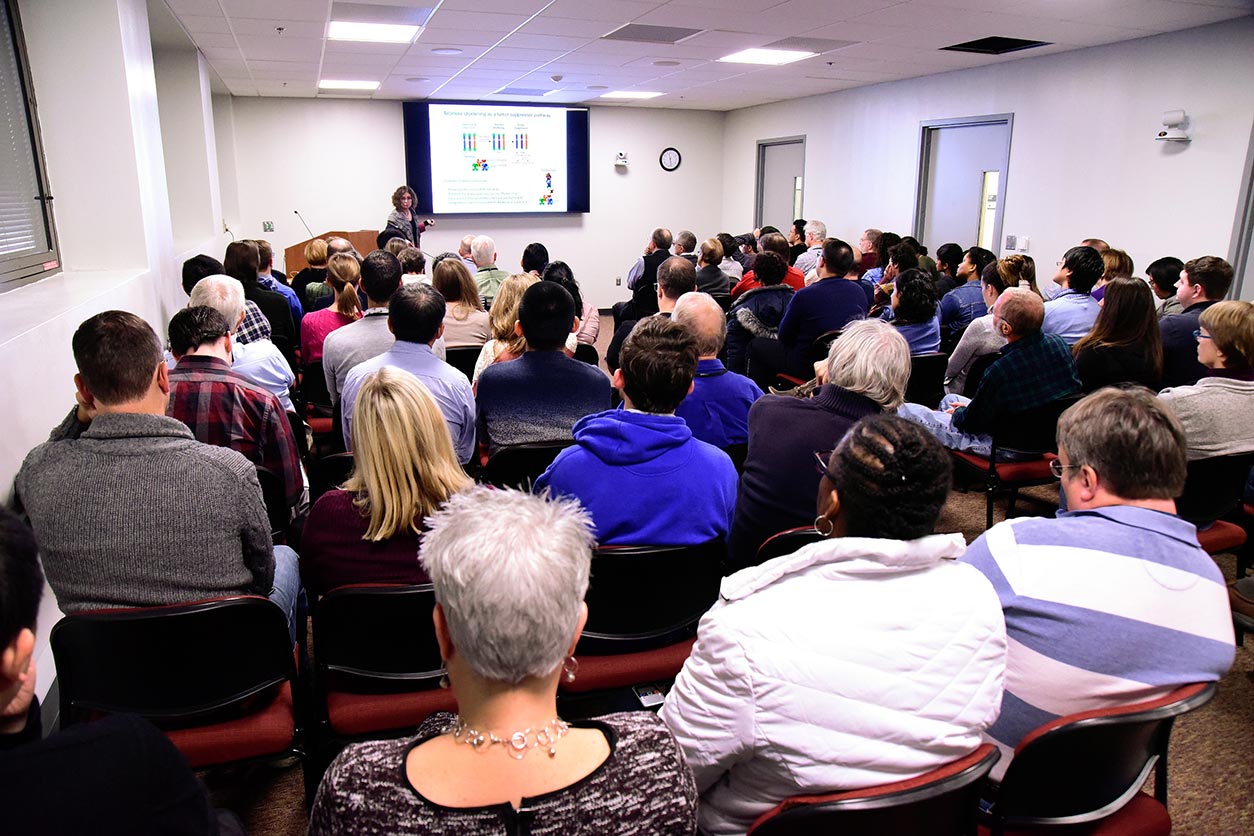 de Lange spoke to a standing-room−only crowd in the conference room that serves as the alternate location for the Distinguished Lecture Series during the renovation of Rodbell Auditorium. (Photo courtesy of Steve McCaw)
de Lange spoke to a standing-room−only crowd in the conference room that serves as the alternate location for the Distinguished Lecture Series during the renovation of Rodbell Auditorium. (Photo courtesy of Steve McCaw)“The idea is that perhaps some of the genomic events that happen during telomere crisis contribute to the rearrangements that one observes in the cancer genome,” de Lange said. “We are very interested in understanding what the consequences are of this telomere crisis.”
To address that question, de Lange seeks to identify patterns of genomic changes that indicate a telomere crisis has occurred. If one has, researchers can see whether the changes result in a cancer-related phenomenon like chromothripsis.
Citations:
de Lange T. 2005. Shelterin: the protein complex that shapes and safeguards human telomeres. Genes Dev 19(18):2100−2110.
de Lange T, Shiue L, Myers RM, Cox DR, Naylor SL, Killery AM, Varmus HE. 1990. Structure and variability of human chromosome ends. Mol Cell Biol 10(2):518−527.
Griffith JD, Comeau L, Rosenfield S, Stansel RM, Bianchi A, Moss H, de Lange T. 1999. Mammalian telomeres end in a large duplex loop. Cell 14;97(4):503−514.
Maciejowski J, Li Y, Bosco N, Campbell PJ, de Lange T. 2015. Chromothripsis and kataegis induced by telomere crisis. Cell 163(7):1641−1654.
(Marla Broadfoot, Ph.D., is a contract writer for the NIEHS Office of Communications and Public Liaison.)





